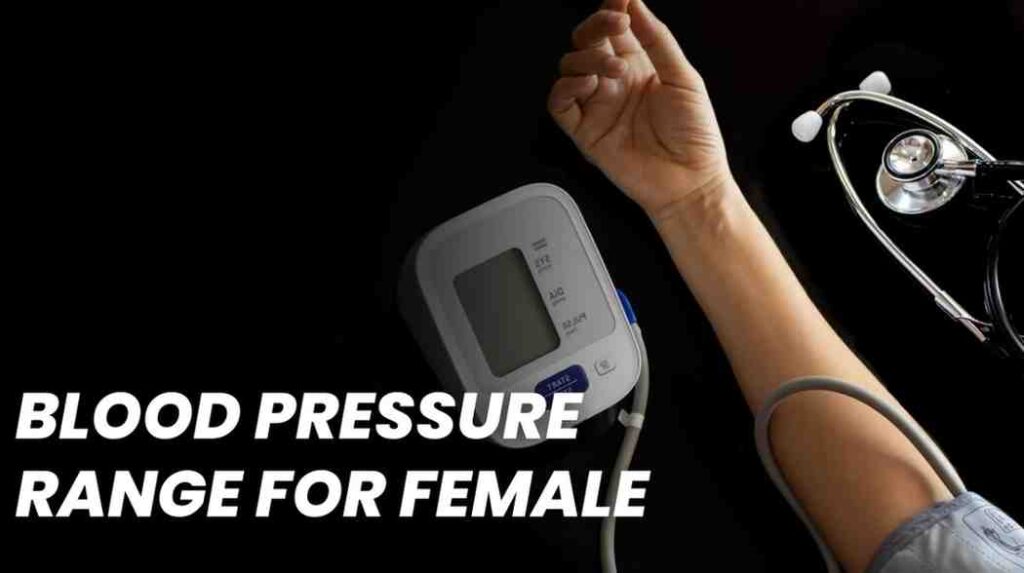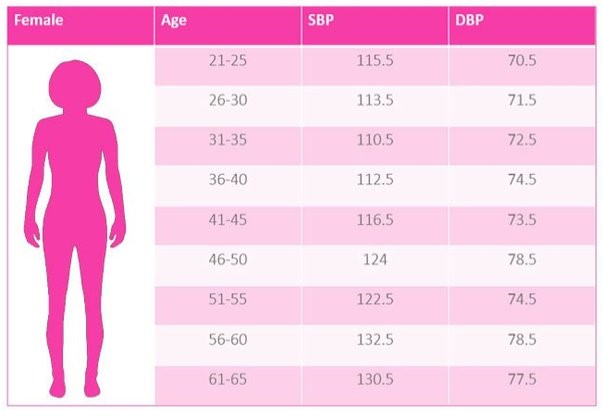Last updated on May 20th, 2025 at 12:47 pm

BP Normal Range for Female – The normal blood pressure range for females is typically defined as having a systolic pressure below 120 mmHg and a diastolic pressure below 80 mmHg. However, it’s essential to recognize that individual factors, including age, overall health, and lifestyle, can influence what is considered normal for a specific person.
Maintaining a healthy lifestyle involves monitoring various aspects of our well-being, and one crucial parameter is blood pressure. Arterial pressure, commonly known as blood pressure, manifests as the dynamic force exerted by the flowing blood against the resilient confines of the arterial walls. It is a vital indicator of cardiovascular health and can help identify potential risks and prevent serious health issues.
What is Blood Pressure?
Blood pressure is measured in millimetres of mercury (mmHg) and is expressed as two numbers, such as 120/80 mmHg. The first number, known as systolic pressure, represents the force when the heart contracts and pumps blood into the arteries. The second numerical value, known as diastolic pressure, signifies the force exerted on the arterial walls during the heart’s resting phase between beats.

BP Normal Range For Female
- Normal: Systolic < 120 mmHg and Diastolic < 80 mmHg
- Elevated: Systolic 120-129 mmHg and Diastolic < 80 mmHg
- Hypertension Stage 1: Systolic 130-139 mmHg or Diastolic 80-89 mmHg
- Hypertension Stage 2: Systolic ≥ 140 mmHg or Diastolic ≥ 90 mmHg
- Hypertensive Crisis: Systolic > 180 mmHg and/or Diastolic > 120 mmHg
Why Monitoring Blood Pressure is Important?
- Cardiovascular Health: High blood pressure is a major risk factor for heart disease and stroke. Monitoring blood pressure helps in the early detection and management of these conditions.
- Preventive Health: Regular blood pressure checks can identify potential health issues, allowing for preventive measures before they escalate.
- Overall Well-being: Maintaining a normal blood pressure range contributes to overall well-being, ensuring that organs receive an adequate supply of oxygen and nutrients.
Also, Read:
- Normal Blood Sugar Levels Chart
- How to Prevent Hair Fall?
- How to Remove Black Spots on Face?
- Diet Plan For Weight Loss
- How to Increase Breast Size?
Tips for Maintaining Healthy Blood Pressure
- Balanced Diet : Embrace a nutritional regimen abundant in a variety of fruits, vegetables, whole grains, and lean proteins to nourish your body with essential vitamins and minerals.
- Regular Exercise : Engage in regular physical activity, such as brisk walking, jogging, or cycling, to promote cardiovascular fitness.
- Maintain a Healthy Weight : Being overweight can contribute to high blood pressure. Losing excess weight through a combination of diet and exercise can be beneficial.
- Limit Alcohol and Caffeine : Excessive alcohol and caffeine consumption can impact blood pressure. Moderation is key.
- Stress Management : Practice stress-reducing techniques, such as meditation, yoga, or deep breathing exercises, to help maintain a healthy blood pressure level.
BP Normal Range For Female Age Wise
Blood pressure (BP) norms can vary with age, reflecting the physiological changes that occur throughout a woman’s life. Here’s an overview of the general blood pressure ranges for females across different age groups:
1. Young Adults (18-30 years)
- Normal Range: Systolic < 120 mmHg, Diastolic < 80 mmHg
- Young females typically have lower blood pressure, and values within or close to the normal range are considered healthy.
2. Adults (30-45 years)
- Normal Range: Systolic < 120 mmHg, Diastolic < 80 mmHg
- Maintaining blood pressure within the normal range is crucial during this stage to prevent the development of hypertension.
3. Middle-aged adults (45-60 years)
- Normal Range: Systolic < 120 mmHg, Diastolic < 80 mmHg
- Blood pressure tends to gradually increase with age, making regular monitoring and healthy lifestyle choices even more important.
4. Seniors (60+ years)
- Normal Range: Systolic < 120 mmHg, Diastolic < 80 mmHg
- While the general normal range remains the same, older females may see an increase in systolic pressure. Close monitoring and preventive measures are essential.

It’s crucial to note that these age-wise guidelines are generalizations, and individual variations exist. Factors such as overall health, genetics, and existing medical conditions can influence blood pressure. Regular check-ups with healthcare professionals are vital to assess individual health status and make appropriate adjustments to lifestyle and treatment plans if needed.
Consult a Doctor and Medkart will help you Order Medicines Online
Conclusion
Understanding the normal range of blood pressure for females is crucial for maintaining cardiovascular health. Regular monitoring, along with a healthy lifestyle, can significantly reduce the risk of hypertension and related complications. By making informed choices and adopting positive habits, females can take control of their cardiovascular well-being and lead a healthier, more fulfilling life.
Read: What are Generic Medicines?
FAQs on BP Normal Range for Female
Q1. What is the BP Normal Range For Females?
Answer : The typical normal blood pressure for females is below 120/80 mmHg, with systolic pressure under 120 mmHg and diastolic pressure under 80 mmHg.
Q.2 How often should females check their blood pressure?
Answer : It is recommended for females to check their blood pressure regularly, at least once a year during routine health check-ups, or more frequently if advised by a healthcare professional.
Q.3 Can blood pressure vary based on age for females?
Answer : Yes, blood pressure norms may vary with age. While the general target is below 120/80 mmHg, it’s essential to consider age-related factors and consult with a healthcare provider for personalized advice.
Q.4 What lifestyle changes can help maintain a healthy blood pressure?
Answer : Lifestyle changes include adopting a balanced diet low in sodium, engaging in regular physical activity, maintaining a healthy weight, limiting alcohol and caffeine intake, and practising stress management techniques like meditation or yoga.
Related Links: